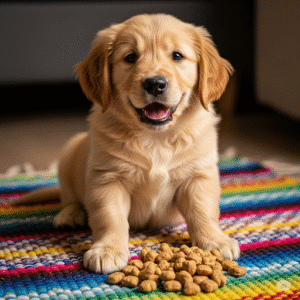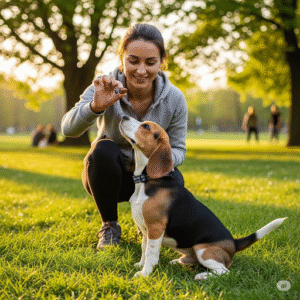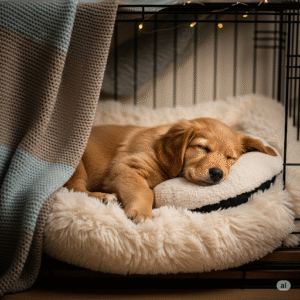🐾 Beginner’s Guide to Puppy Training: Turning Cute Chaos into a Well-Behaved Companion
“Your puppy is not just a pet — it’s a little fluff ball of potential waiting to be shaped.”
Getting a puppy is like bringing home joy in fur form — but along with wagging tails come chewed slippers, surprise puddles, and midnight zoomies. Puppy training is the bridge between chaos and companionship. Whether you’ve just brought home your first pup or you’re brushing up on the basics, this guide will walk you through everything you need to know to start on the right paw.
🎯 Why Puppy Training Matters
Training isn’t just about teaching “sit” and “stay” — it’s about building trust, shaping behavior, and ensuring your puppy grows into a confident, well-mannered dog.
-
Safety – Commands like “come” and “leave it” can prevent accidents.
-
Bonding – Training strengthens your relationship with your pup.
-
Social Skills – Well-trained puppies are more welcome in public spaces.
🐕 Pick-up Line for Dog Lovers: “A well-trained pup is like Wi-Fi — they keep you connected without the mess.”
🍼 Step 1: Start Early, But Keep It Gentle
Puppies have short attention spans (think TikTok video length). Start training as soon as you bring them home, ideally between 8–12 weeks.
-
Short sessions (5–10 mins)
-
Lots of praise & treats
-
Patience over punishment
Pro Tip: Use positive reinforcement — reward what you like, ignore what you don’t.
🚽 Step 2: House Training – Bye Bye, Indoor Accidents
House training is the first big challenge. Puppies don’t know the bathroom rules — you have to teach them.
The 3-Step Potty Plan:
-
Take them out frequently — after meals, naps, and playtime.
-
Choose a spot — use the same location so they link the scent to “toilet time.”
-
Reward immediately — treats within 2 seconds of the act.
 .
.
🦴 Step 3: Basic Commands Every Puppy Should Know
Think of commands as your pup’s “life toolkit.” Start with these five:
-
Sit – Foundation for all commands.
-
Stay – Essential for impulse control.
-
Come – Crucial for safety.
-
Leave It – Prevents dangerous chewing.
-
Down – Helps with calming.
Training Trick: Use hand signals along with verbal commands — dogs read body language better than words.
🐶 Step 4: Socialization – Raising a Friendly Pup
From 8–16 weeks, puppies are in their critical socialization period. Introduce them to:
-
Different people (with hats, sunglasses, uniforms)
-
Other dogs (vaccinated & friendly)
-
Common sounds (vacuum, cars, doorbells)
Socialization Checklist:
✅ Parks
✅ Pet-friendly cafés
✅ Vet visits without shots
✅ Car rides
💬 Pick-up Line: “A socialized pup is like an extrovert at a party — everyone wants to say hi.”
🛑 Step 5: Nipping Bad Habits Early
Puppies explore with their mouths — but chewing furniture or biting hands needs redirection.
Solutions:
-
Chew toys instead of shoes.
-
Yelp softly if they nip, then stop play briefly.
-
Crate training for safe alone time.
💤 Step 6: Crate Training – Their Cozy Safe Space
A crate isn’t a cage — it’s your pup’s bedroom.
-
Choose a crate big enough to stand, turn, and lie down.
-
Never use the crate as punishment.
-
Make it inviting with blankets & toys.

🗣 Step 7: Consistency is Key
Training is like going to the gym — results come from regular, repeated practice.
-
Use the same commands every time.
-
Keep family members aligned on rules.
-
Track progress (notebook or pet app).
💬 Pick-up Line: “A consistent trainer makes a confident dog.”
🥇 Step 8: Celebrate Small Wins
Every “sit” and “stay” is progress. Puppies thrive on your enthusiasm.
-
Have “puppy graduation days” for milestones.
-
Share progress photos (perfect for your PetZilla blog or Instagram).
📌 Quick Training Timeline
| Puppy Age | Focus Area |
|---|---|
| 8–12 weeks | House training, sit, socialization |
| 3–4 months | Stay, come, leash training |
| 5–6 months | Leave it, down, longer stays |
| 6+ months | Advanced tricks, off-leash recall |
💡 Bonus: Common Puppy Training Mistakes to Avoid
❌ Yelling when they make mistakes (confuses them)
❌ Skipping training days
❌ Overtraining (burns them out)
❤️ Final Woof
Training your puppy is a journey — some days will feel like you’re raising a furry genius, others like you’re negotiating with a tiny chaos gremlin. But with patience, consistency, and love, you’ll raise a loyal, happy, and well-behaved companion.
“A trained puppy isn’t just a pet — it’s a best friend for life.”
